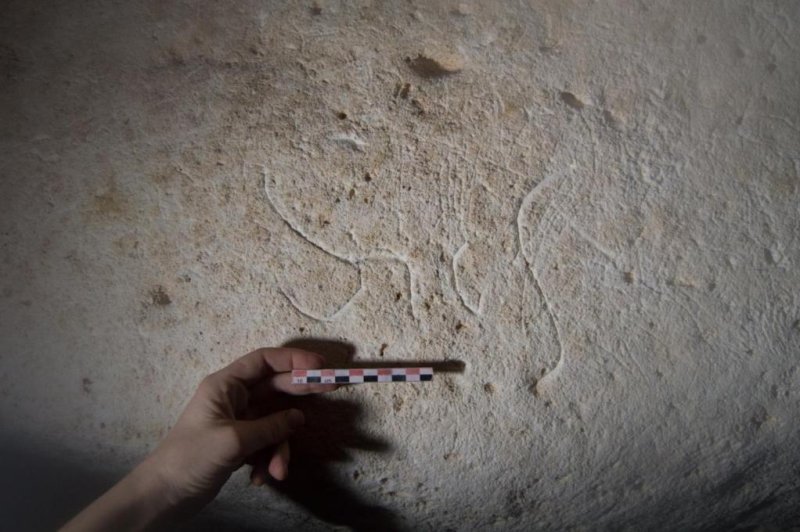1 of 2 | In addition to indigenous spiritual iconography, researchers have found scripts in Latin and Spanish, as well as Christian symbols, in the caves of Mona, a remote Puerto Rican island. Photo by University of Leicester
ISLA DE MONA, Puerto Rico, July 19 (UPI) -- Several hundred years ago, the earliest European explorers and settlers sought communion with Native Americans.
Cave art found on a remote Caribbean island suggests the first generations of Europeans to cross the Atlantic and settle in the New World engaged in religious dialogue with the indigenous peoples of the Americas.
Archaeologists had previously found painted spiritual iconography on the caves of Mona, the third largest island in the Puerto Rican archipelago and an important stop on the sailing routes from Europe to America. That latest fieldwork by a team of researchers from Europe, Puerto Rico and the United States has revealed a series of signatures and inscriptions by Europeans -- including Christian iconography and religious phrases in Latin and Spanish.
"Increasing use of interdisciplinary approaches and archaeometric analyses have provided new understandings of colonial processes that are more nuanced than mere oppression, domination and, in the case of the Caribbean, indigenous extinction," Alice Samson, an archaeologist at the University of Leicester, said in a news release. "This not only provides a counterpoint to official metropolitan histories, but also tracks the beginnings of new religious engagements and transforming cultural identities in the Americas."
Researchers, who detailed their latest discoveries in the journal Antiquity, suggest intercultural artifacts can offer new perspectives on the ways identities of both Europeans and Native Americans changed during the 15th and 16th centuries.
"This research reveals a new perspective on the personal encounter between indigenous populations and the first generations of Europeans in the Americas," concluded Jago Cooper, a researcher at the British Museum. "This is a unique site that helps us to understand the origins of cultural identity in the Americas, the start of a process that continues right up to the modern day."















